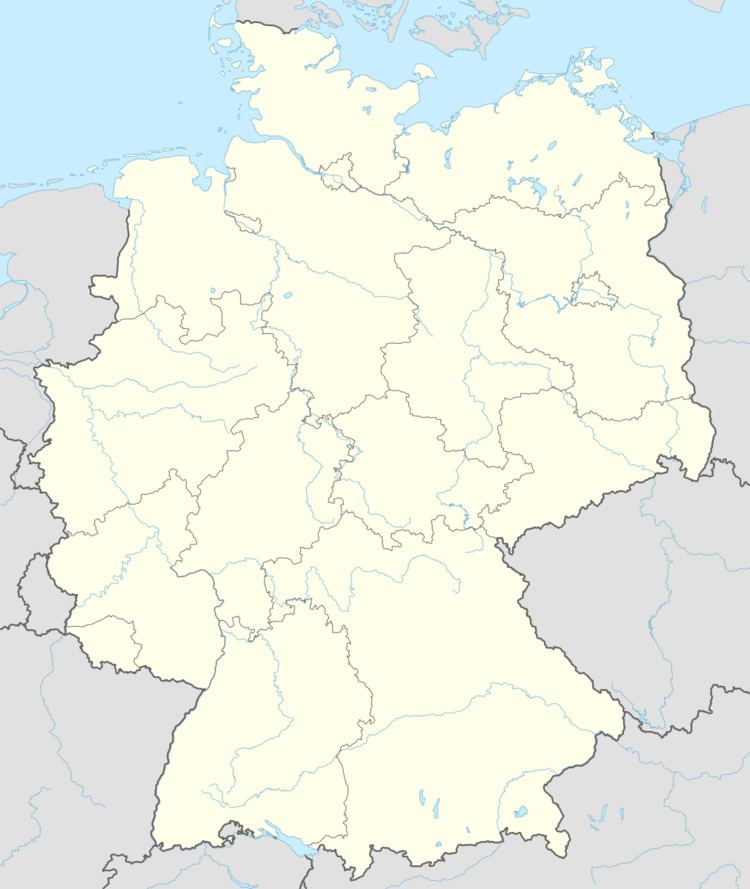Country Germany Admin. region Stuttgart Time zone CET/CEST (UTC+1/+2) Area 20.14 km² Local time Thursday 7:07 PM | State Baden-Württemberg District Ludwigsburg Postal codes 74357 Population 7,594 (31 Dec 2008) Postal code 74357 | |
 | ||
Weather 8°C, Wind W at 14 km/h, 55% Humidity | ||
Bönnigheim is a town in the German administrative district (Kreis) of Ludwigsburg which lies at the edge of the areas known as Stromberg and Zabergäu. The nearest large towns are Ludwigsburg and Heilbronn.
Contents
- Map of BC3B6nnigheim Germany
- Geography
- History
- Ganerbentum
- Modern era
- Religion
- Incorporated parishes
- Town council
- References
Map of B%C3%B6nnigheim, Germany
Geography
Districts of the town
The town includes the previously separate parishes of Hofen and Hohenstein. The boundaries established on 31 December 1971, saw the inclusion of the property known as the Burgermühle and the lost village of Birlingen. The former parish of Hofen now comes under the village of Hofen. In the same way, the former parish of Hohenstein now comes under the village of that name.
History
Development of the town
The first documentary reference to Bönnigheim occurs in the Lorsch codex. In a document dated 16 February 793, the nun Hiltburg bequeathed the parishes of Bönnigheim, Erligheim and Alt-Cleebronn to the abbey of Lorsch, and it was due to this bequest that Bönnigheim fell to the bishopric of Mainz. The monastery of Hirsau later bought the village as a fief and sold it in 1284 to the monastery of Bebenhausen.
Ganerbentum
In the same year, Bönnigheim was granted the status of a so-called Ganerbentum (community of joint owners), and in 1288 the fief was passed to Rudolf von Habsburg, who in turn granted it to his son, Albrecht von Löwenstein-Schenkenberg, in 1291. The estate that had emerged from the so-called Ganerbentum, which lasted until 1750, became partitioned through inheritance, marriage and purchase.
During this time the ownership of the town, which still came under the rule of the bishopric of Mainz, was subdivided between four noble families - the Lords of Sachsenheim, Liebenstein, Gemmingen and Neipperg. Each of the heirs became entitled to a quarter of the town. The same hereditary circumstances prevailed in nearby Erligheim.
It is impossible for a town to be divided into four parts without this also impinging on the life of the community. Furthermore, it is hardly surprising that such a situation should also give rise to quarrels between the heirs themselves. Accordingly, a local truce was agreed in 1388, thus giving Bönnigheim its first bylaws. Under the terms of this truce, the four heirs agreed that a so-called ‘Baumeister’ would be elected from their ranks every two years (later every three years) who would be responsible for the administration of the town. The ‘Baumeister’ took up residence in the castle. Also established as part of this agreement was the election of the town council and of the mayor, as well as the appointment of a bailiff. During the Peasants Revolt, the castle was burnt down. It was rebuilt in 1546, only to be partially torn down again in 1697. The castle remains in this latter state today.
Modern era
In 1750, Earl Friedrich von Stadion purchased the town and so brought to an end the Garnerbentum era. In 1756, Bönnigheim passed to Württemberg via its purchase by Duke Carl Eugen. Here it became part of the old administrative district of Besigheim which, in turn, came under the administrative district (Landkreis) of Ludwigsburg in 1938.
Religion
Apart from the Protestant and Roman Catholic congregations, the population also includes those of the New Apostolic faith.
Incorporated parishes
Town council
The local election held on 7 June 2009 resulted in a Council consisting of 18 members. The turnout was 54.64%. The result of the election was as follows.
